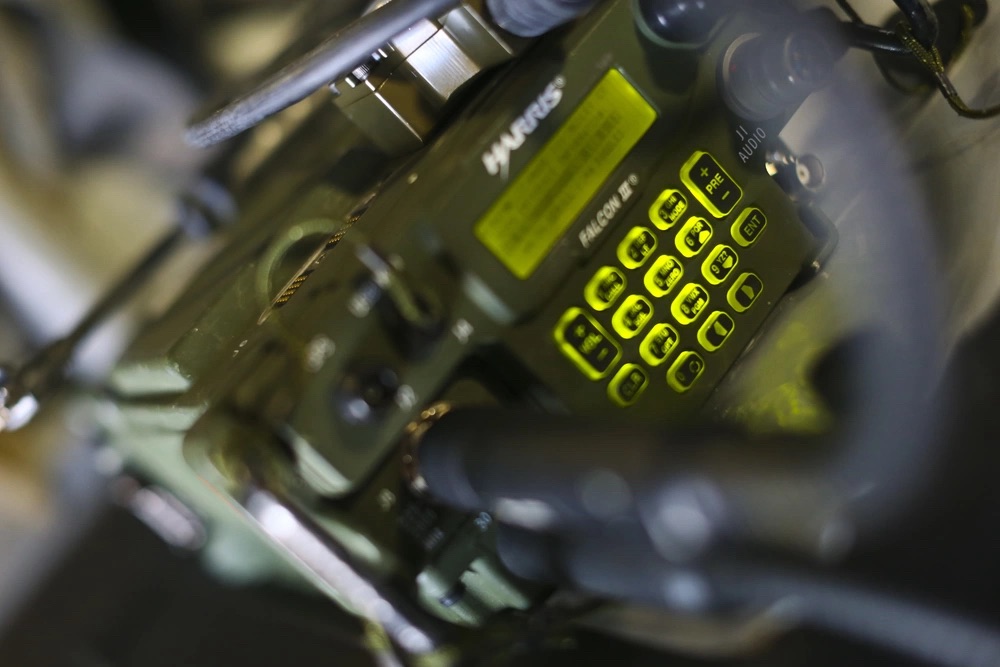In a decisive move meant to ensure dominance over the electromagnetic spectrum, Marine Corps Systems Command is on track to upgrade 50,000 legacy radios with state-of-the-art multi-channel, crypto-compliant models in Fiscal Year 2024.

In line with Force Design’s call for rapid force modernization, MARCORSYSCOM’s Program Manager for Communications Systems, or PM CS, team has moved quickly— fielding more than 4,000 radios across the fleet since October 2023.
In recent years, experts have warned that stagnation in U.S. electromagnetic spectrum operations– the strategic and tactical management of electromagnetic frequencies for military communications, intelligence, and combat operations– has enabled our adversaries to significantly challenge American dominance in this crucial domain.
Recognizing this urgent need for change, the 2018 National Defense Strategy laid the foundation for the Department of Defense’s 2020 Electromagnetic Spectrum, or EMS, Superiority Strategy—a document that emphasizes the EMS as a critical battleground where invisible waves and frequencies become pivotal in modern warfare.
With this new strategic reality in mind, PM CS has worked tirelessly to update the fleet’s radio capabilities, ensuring that the fleet has the communications capabilities required to fight and win– no matter the clime, place, or electromagnetic environment.
“We began fielding in October, focusing on a specific domain while being mindful of the capabilities of multi-channel radios,” explained Richard Sessions, program manager for Communications Systems. “In addition to their enhanced functionality, our priority was to transition to radios that meet cryptographic compliance standards mandated by the NSA. This compliance allows us to operate securely across various frequencies and within a secure environment. Our deadline for achieving this compliance is set for December 31, 2024.”
The new multi-channel radios provide the warfighter with a versatile, software-defined system that emphasizes modularity and flexibility to allow rapid integration of new waveforms and cryptographic standards. This enhances Marines’ ability to operate securely and effectively in the dynamically evolving electromagnetic environment.
“The closest analogy to our current transition in radio technology is akin to moving from the era of flip phones to the advanced world of smartphones,” said Sessions. “In the past, we were limited to purchasing radios with fixed capabilities and had to replace them with newer models as technology evolved. Now, we’re shifting towards acquiring highly adaptable hardware radios that are not just modular but also capable of supporting new waveforms, marking a significant milestone in our communication capabilities.”
As the Corps prepares to fight and win on the future battlefield, these fieldings prove crucial as superiority in the electromagnetic spectrum directly influences communication, intelligence, and combat effectiveness—safeguarding the warfighter’s strategic advantage ahead of the future fight.
In order to address challenges in transitioning from hardware-centric management to waveform and software configuration management, the PM CS team maintains regular contact with NSA partners. This ensures alignment and approvals for the necessary waveforms and configurations.
However, the team noted that communication with the fleet is also critical, underscoring the importance of Marine feedback throughout the acquisition process.
According to Stephenie Dodge, product manager at PM CS, “Our team has conducted extensive testing and field user evaluations involving Marine units to ensure that our systems meet their needs. In every aspect of our work, we actively involve Marines from the fleet. We provide them with the equipment, offer quick training sessions, and then seek their input on how they would use it, what improvements are needed, and what aspects need fixing.”
Ultimately, this effort is critical within the context of Force Design’s ambitious modernization goals. As Sessions highlighted, Tactical Communications Modernization bolsters our operational capabilities, securing robust communication and efficient data flow.
“In today’s Marine Corps operations, where combat often unfolds within the electromagnetic spectrum, our success relies heavily on maintaining effective communication across the fleet and with joint forces,” said Sessions. “Controlling this space is critical, as it directly impacts our physical deployment capabilities. A key focus in our communication systems’ rollout is minimizing detection and interception risks. We’re dedicated to making our systems challenging for the enemy to locate and disrupt, thereby enhancing the operational security and effectiveness of our units in this digital battlespace.”
Despite the logistical challenges associated with the modernization of the fleet’s radio capability, the PM CS team is on track for a successful fielding. In a transformative move for Marine communications, the planned deployment of 30,000 multi-channel radios by December 31, 2024, is poised to significantly enhance the communication capabilities of Marines in the field, marking a crucial advancement in military communications technology.
Story by Johannes Schmidt, Marine Corps Systems Command
Photo of AN/PRC-117/G by Cpl Summer Romero, Marine Aviation Weapons and Tactics Squadron-1


Im in another countries military, and to see the PRC117g being referred to as outdated is hilarious.
This is like our top of the line radio